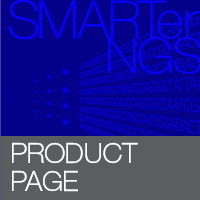Epigenetics is the study of heritable changes in gene expression that take place by chemically modifying the DNA without affecting the underlying sequence. One widely studied epigenetic modification is the methylation of DNA at cytosine residues, which usually occurs in dense clusters near transcriptional start sites and regulates gene expression. Using next-gen sequencing, the methylation profile can be captured from a genomic DNA sample of interest.
Overview of the EpiXplore Meth-Seq DNA Enrichment Kit workflow
The EpiXplore Meth-Seq DNA Enrichment Kit is a next-gen sequencing library preparation kit which separates the methylated and unmethylated genomic DNA fragments by utilizing the highly specific binding affinity of the MBD2 protein for methylated DNA. DNA enrichment is followed by library preparation using the DNA SMART method. This kit facilitates your methylated DNA-seq experiments with:
- A simple protocol for enriching both methylated and unmethylated DNA from inputs of 25 ng–1 µg of fragmented genomic DNA
- A streamlined workflow for generating Illumina-ready sequencing libraries from sheared genomic DNA inputs in just 6 hours
- An efficient method for adding adapters without ligation or the associated cleanup, reducing the loss of limited input DNA

EpiXplore Meth-Seq DNA Enrichment technology workflow. His-tagged MBD2 protein (Methyl-CpG Binding Domain Protein 2) is used to capture the methylated DNA fraction from the sheared genomic DNA sample, enabling column separation of the methylated and unmethylated DNA fractions. The subsequent library preparation portion of the workflow allows users to generate Illumina-compatible libraries for meth-seq experiments.





